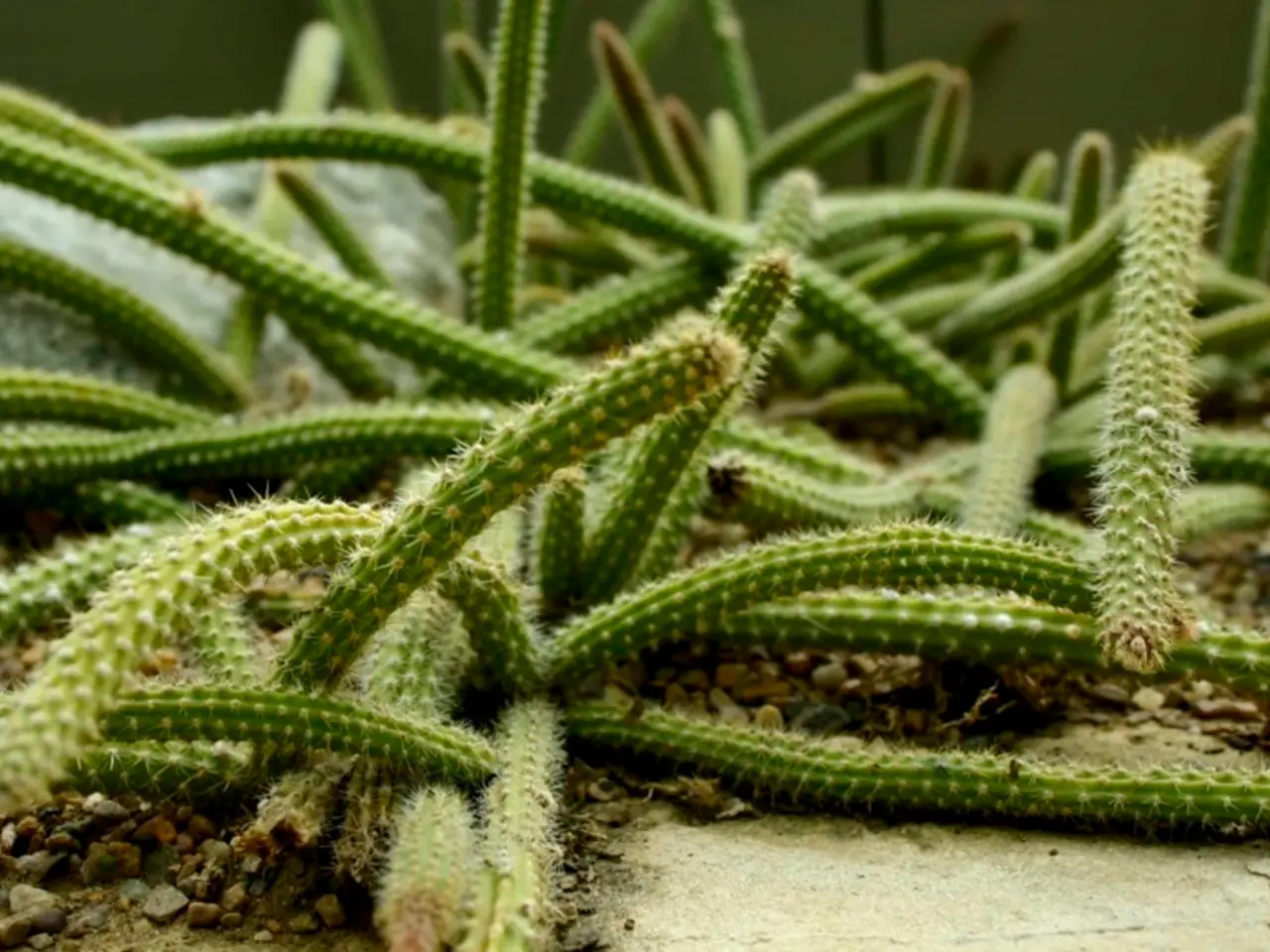Guide to Cactus Maintenance
Propagating Cacti and Succulents: A Step-by-Step Guide
Cacti and succulents are popular houseplants, and propagating them can be a rewarding experience. There are several methods to reproduce these plants, including division, cuttings, starting from seeds, and grafting. In this article, we will focus on the division method.
Division of Cacti
To propagate cacti using the division method, follow these steps:
- Identify Offsets or Pups: Look for smaller cacti growing around the base of the main plant. These are called offsets or pups and can be separated to grow new plants.
- Remove the Offset Carefully: Gently separate the offset from the parent cactus. If roots are present, try to preserve them. Use a clean, sharp tool if necessary to cut the offset free without damaging either plant.
- Allow the Offset to Callous: Let the cut end of the offset dry and form a callous over 1-2 days. This step is crucial to prevent rot when planted.
- Plant in Well-Draining Soil: Use a cactus or succulent potting mix, which drains well and prevents waterlogging. Plant the calloused offset so that its roots (if any) make contact with the soil.
- Water Lightly and Provide Indirect Sunlight: Water the newly potted offset lightly, then allow the soil to dry completely before watering again. Keep the plant in bright indirect sunlight until it establishes roots, which can take several weeks.
- Transition to More Sunlight: Once the offset is rooted and growing, gradually move it to a sunnier spot typical for cacti care.
The division method is effective for cacti that produce multiple offshoots or pups naturally. This vegetative propagation ensures the new plants are clones of the parent.
Division of Succulents
For succulent leaf cuttings like hens and chickens, burro tails, etc., choose mature leaves that are not in the process of dying. The removed leaf can be laid on potting soil or mix, or put in a cardboard box on top of the refrigerator or any other convenient place. Don't water until the roots appear.
General Propagation Tips
Good drainage is important when propagating cacti and succulents because the roots have been disturbed and damaged roots are more susceptible to rot. Division of indoor plants can take place at any time, but it is especially successful during the winter when the plant is resting.
Propagating plants through cuttings is inexpensive, relatively fast, and doesn't require a lot of know-how. Starting plants from seeds can be gratifying, and the greatest satisfaction comes from growing plants from seed you have hybridized yourself.
When removing leaves, there is less chance of damage to the plant if they are pulled sideways, and a better chance that there will be a tiny piece of stem attached. High humidity is not necessary and possibly harmful in propagating plants by cuttings, but bottom heat is a big help.
After the roots and young plant start showing, the mix can be kept moist. The leaves may rot if watered before this. In propagating plants by cuttings, a piece of root, stem, or leaf is taken from the plant, kept under favorable conditions, and encouraged to grow, producing a new plant which is usually, but not always, identical to the original.
Home is not always the ideal place to propagate plants, but with some plants, the percentage of success is so great that one keeps wanting to start more.
- Embracing a healthy lifestyle, homeowners can also utilize their green spaces for propagating succulents through unique methods, such as cultivating hens and chickens from leaf cuttings.
- The realm of science and gardening intertwine in the profound satisfaction derived from engaging in DIY projects, like propagating cacti and succulents, which demonstrates the potential of home-and-garden adaptations to enrich one's lifestyle.
- To delve deeper into botanical pursuits, one could even attempt the more challenging, yet rewarding, process of growing plants from seeds, opening avenues for experimentation in the science and art of horticulture within the comfort of one's home.



